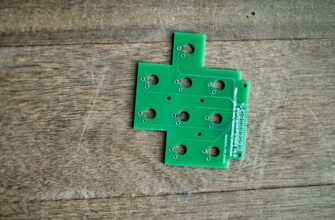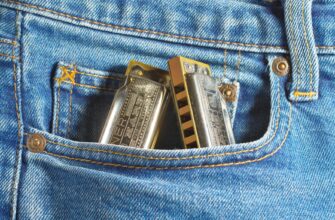Bitcoin, the world’s first and most well-known cryptocurrency, has captured global attention. Whether you’re looking to invest, make purchases, or simply explore the digital asset space, buying Bitcoin is often the first step. This comprehensive guide breaks down **how to buy Bitcoin step by step**, making the process clear, safe, and accessible for beginners.
## Why Buy Bitcoin?
Before diving into the steps, it’s worth understanding why people buy Bitcoin:
* **Potential Investment:** Many view Bitcoin as a store of value or a long-term investment (like “digital gold”).
* **Decentralization:** Bitcoin operates on a peer-to-peer network, independent of central banks or governments.
* **Transparency:** All Bitcoin transactions are recorded on a public ledger called the blockchain.
* **Accessibility:** Anyone with an internet connection can potentially buy and use Bitcoin.
**Important Note:** Bitcoin is a highly volatile asset. Its price can fluctuate significantly. Only invest what you can afford to lose.
## Step 1: Choose a Bitcoin Wallet
Your Bitcoin wallet is where you securely store your cryptocurrency. Think of it like a digital bank account specifically for Bitcoin. There are several types:
* **Software Wallets (Hot Wallets):** Apps on your phone or computer. Convenient for frequent access but connected to the internet (higher hacking risk). Popular options include:
* Exodus
* Trust Wallet
* Electrum (Desktop)
* **Hardware Wallets (Cold Wallets):** Physical devices (like USB drives) that store your Bitcoin offline. Highly secure for long-term storage. Leading brands:
* Ledger
* Trezor
* **Custodial Wallets:** Wallets managed by exchanges (see Step 2). You don’t control the private keys. Easier for beginners but less secure.
**Recommendation for Beginners:** Start with a reputable software wallet for ease of use. Consider a hardware wallet for larger amounts.
## Step 2: Select a Cryptocurrency Exchange
Cryptocurrency exchanges are online platforms where you can buy, sell, and trade Bitcoin and other cryptocurrencies. Key factors when choosing:
* **Reputation & Security:** Research the exchange’s history, security measures (like 2FA), and insurance policies.
* **Fees:** Compare trading fees, deposit/withdrawal fees, and spread (difference between buy/sell price).
* **Payment Methods:** Ensure they support your preferred deposit method (bank transfer, debit/credit card, etc.).
* **Ease of Use:** Look for a user-friendly interface, especially if you’re new.
* **Supported Cryptocurrencies:** While focusing on Bitcoin, check if they offer other coins you might be interested in later.
* **Regulation & Location:** Choose exchanges regulated in reputable jurisdictions.
**Popular Beginner-Friendly Exchanges:**
* Coinbase
* Kraken
* Binance
* Gemini
## Step 3: Create and Verify Your Exchange Account
1. **Sign Up:** Visit the exchange’s website or download its app. Provide your email address and create a strong, unique password.
2. **Enable Two-Factor Authentication (2FA):** **This is crucial for security.** Link an authenticator app (like Google Authenticator or Authy) to your account.
3. **Complete KYC Verification:** Know Your Customer (KYC) regulations require exchanges to verify your identity. You’ll typically need to provide:
* Full Name
* Date of Birth
* Residential Address
* Government-issued ID (Passport, Driver’s License)
* Sometimes a selfie for facial verification
Verification can take minutes to a few days. You usually cannot deposit funds or trade until verified.
## Step 4: Deposit Funds
Once verified, you need to add money (fiat currency like USD, EUR, GBP) to your exchange account to buy Bitcoin.
1. Navigate to the “Deposit” or “Add Funds” section of the exchange.
2. **Choose Your Deposit Method:** Common options include:
* **Bank Transfer (ACH/SEPA):** Usually the cheapest method, but can take 1-5 business days.
* **Debit/Credit Card:** Faster (often instant), but typically incurs higher fees (3-5% or more).
* **Wire Transfer:** Faster than ACH but often has higher bank fees.
* **Other Cryptos:** Some exchanges allow funding with other cryptocurrencies you already own.
3. **Enter Deposit Amount:** Specify how much fiat currency you want to deposit.
4. **Follow Instructions:** Complete the steps specific to your chosen method (e.g., logging into your bank account via Plaid for ACH, entering card details).
## Step 5: Place Your Bitcoin Buy Order
With funds in your exchange account, you’re ready to buy Bitcoin.
1. Navigate to the trading section (often labeled “Trade,” “Buy/Sell,” or “Markets”).
2. **Select Bitcoin (BTC):** Ensure you are buying Bitcoin (BTC), not another cryptocurrency.
3. **Choose Order Type (Simplified):**
* **Market Order:** Buys Bitcoin immediately at the best available current market price. Fastest and simplest for beginners.
* **Limit Order:** Allows you to set the specific price you want to buy Bitcoin at. Your order only executes if the market reaches that price. Offers more control over price but may not execute immediately (or at all).
4. **Enter Amount:** Specify how much Bitcoin you want to buy OR how much fiat currency you want to spend.
5. **Review & Confirm:** Double-check the amount, price, and estimated fees. Confirm the purchase.
**Congratulations!** The Bitcoin will now appear in your exchange account balance.
## Step 6: Transfer Bitcoin to Your Personal Wallet (Highly Recommended)
**This is a critical security step.** Leaving Bitcoin on an exchange (a custodial wallet) means you don’t fully control it. If the exchange is hacked or goes offline, you could lose your funds.
1. Open your **personal wallet** (the one you set up in Step 1).
2. Find your wallet’s **Bitcoin Receive Address.** This is a long string of letters and numbers (or a QR code). **Always double-check the address!**
3. Go to the **Withdraw** or **Send** section of your **exchange account**.
4. Select Bitcoin (BTC) as the cryptocurrency to withdraw.
5. **Paste your personal wallet’s Bitcoin Receive Address** into the recipient field. Scan the QR code if possible for accuracy.
6. Enter the amount of Bitcoin you want to transfer.
7. Review the transaction details (especially the address!) and any network fees.
8. Confirm the withdrawal. The transfer may take a few minutes to an hour to appear in your personal wallet, depending on network congestion.
## Securing Your Bitcoin Investment
* **Use Strong Passwords & 2FA:** For both your exchange account and personal wallet.
* **Backup Your Wallet:** Especially for software/hardware wallets. Write down your **Recovery Seed Phrase** (a list of 12-24 words) on paper and store it securely offline. **Never share this phrase or store it digitally!** This is the *only* way to recover your Bitcoin if you lose access to your wallet.
* **Beware of Scams:** Be extremely cautious of unsolicited offers, “get rich quick” schemes, phishing emails, and fake support calls. Legitimate companies will never ask for your password or seed phrase.
* **Keep Software Updated:** Ensure your wallet apps and device operating systems are always up-to-date.
* **Consider Dollar-Cost Averaging (DCA):** Instead of investing a large sum all at once, invest smaller amounts regularly to average out the purchase price over time.
## Frequently Asked Questions (FAQ)
**Q: Is buying Bitcoin legal?**
**A:** In most countries, yes, buying Bitcoin is legal. However, regulations vary significantly. Always check the specific laws in your country or region.
**Q: How much does it cost to buy Bitcoin?**
**A:** Costs include:
* **Exchange Fees:** Trading fees (maker/taker fees, often 0.1%-0.5%), deposit/withdrawal fees.
* **Network Fees (Gas Fees):** Paid to Bitcoin miners to process transactions, especially when transferring Bitcoin to your wallet. Fees fluctuate based on network demand.
* **Spread:** The difference between the buy and sell price on an exchange.
* **Card Fees:** Often 3-5% or more if using a debit/credit card.
**Q: Can I buy less than one whole Bitcoin?**
**A:** Absolutely! Bitcoin is divisible. You can buy very small fractions, known as Satoshis (1 Bitcoin = 100,000,000 Satoshis). Most exchanges allow purchases starting from $5-$10 worth.
**Q: How long does it take to buy Bitcoin?**
**A:** Signing up and starting verification is quick. Verification can take minutes to days. Depositing funds depends on the method (instant for cards, 1-5 days for bank transfers). Buying Bitcoin on the exchange is usually instant once funds are available. Transferring to your personal wallet takes minutes to an hour typically.
**Q: Is it safe to buy Bitcoin?**
**A:** Buying Bitcoin carries risks:
* **Volatility Risk:** Prices can swing dramatically.
* **Security Risk:** Exchanges and personal devices can be hacked. Using strong security practices (2FA, personal wallets) is essential.
* **Regulatory Risk:** Government regulations can change.
* **Scam Risk:** Be vigilant against fraud. Using reputable platforms and practicing good security significantly mitigates risks.
**Q: What’s the difference between Bitcoin (BTC) and Bitcoin Cash (BCH) or other forks?**
**A:** Bitcoin (BTC) is the original cryptocurrency. Bitcoin Cash (BCH) is a “fork” – a separate cryptocurrency created from a split in the Bitcoin blockchain in 2017, primarily over block size. They are distinct assets with different values and purposes. Ensure you are buying **BTC** if you want the original Bitcoin.
**Q: Do I have to pay taxes on Bitcoin?**
**A:** Tax treatment varies greatly by country. In many jurisdictions (like the US, UK, EU), buying Bitcoin isn’t taxable, but selling it for profit (capital gains), spending it, or earning it (e.g., mining) likely is. Consult a tax professional familiar with cryptocurrency regulations in your area.
Buying Bitcoin for the first time can seem daunting, but by following these clear steps – choosing a wallet, selecting a secure exchange, verifying your identity, funding your account, placing your order, and securely transferring your Bitcoin – you can confidently enter the world of cryptocurrency. Remember to prioritize security, start small, do your own research, and only invest what you can afford to lose.








